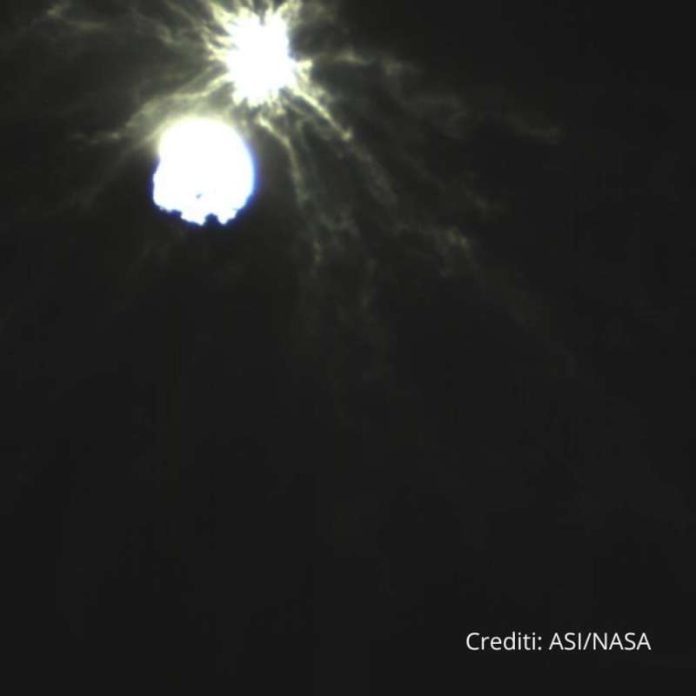NASA has completed its first-ever “planetary defense” test, in which its DART spacecraft deliberately collided with an asteroid floating millions of miles from Earth in an attempt to alter its course.
The US space agency said it had achieved a direct hit, but it is still waiting for data from the experiment, as the space mission hit the object located 11 million kilometers from Earth, at a speed of up to 14,000 miles per hour, reports a local Arabic daily.
During its mission, a small, microwave-sized spacecraft belonging to the Italian Space Agency, called the Light Italian Asteroid Imaging CubeSat, or LiciaCube for short, captured this historic moment.
More than 24 hours after the historic DART mission, the Italian Space Agency began sharing some images of the asteroid impact, first at a press conference, and then on social media.
In a tweet yesterday, the Italian Space Agency shared for the first time a short animation showing the scene before and after the collision with the asteroid “Dimorphos”, which is the smaller and fainter of the two gray objects visible in the image.
Demophos appears suddenly brightening when the Dart spacecraft hits it at 14,400 miles per hour. The largest object is Didymos, the largest companion asteroid to Demorphos.
In its tweet, the Italian agency quoted Elisabetta Dotto, the science team leader at the Italian National Institute of Astrophysics, as saying: “Pre- and post-impact image. You can see the flash caused by the Dart effect.”
And in a second tweet, shared by the Italian Space Agency, changing the direction of the image, with “Demorphos” seen in the upper left part of the image, obscured in a bright flash, with Didymus illuminating the effect to the right of the middle of the frame.
“In the foreground we see the central body Didymus, and at the top Demorphos is completely covered with debris from the collision,” the agency quoted Dr. Dotto as saying in a tweet on Twitter.
The Liciacube spacecraft captured the images just as Dart hit the asteroid Demorphos, but had to wait until the Deep Space Network, the globe-spanning network of radio antennas used to communicate with spacecraft outside Earth’s orbit, could begin downloading the images.

















